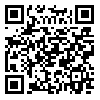BibTeX | RIS | EndNote | Medlars | ProCite | Reference Manager | RefWorks
Send citation to:
URL: http://ce.mazums.ac.ir/article-1-227-en.html
Iodine fortification is widespread. Systematic monitoring of iodine fortification programs should be carried out to secure an optimal fortification level. This study aimed to investigate the effectiveness of iodine fortification program by evaluation of goiter prevalence, median urinary iodine excretion of School children in Iranat baseline until now according to national studies data. In this study, all scientific papers of IDD surveillance system, results of IDD-related surveys at national levels searched by Scopus, PubMed, Science Direct, ScienceDirect, SID and IranMedex in English and Persian with no time limitation. National studies data are summarized, interpreted, and then organized. According to national nutrition and food safety document criteria, Goiter prevalence, urinary iodine excretion in schoolchildren and iodine content of salt at household, factory and distribution sites were acceptable, however lack of adequate iodine nutrition (insufficient or above requirement median urinary iodine) in some provinces were detectable yet. It seems Iran has made strong progress in the development of universal salt iodization strategy and meets all criteria for sustainable elimination of iodine deficiency. However, lack of adequate iodine nutrition in some provinces necessitates special attention and proper. Also according to systematic monitoring of iodine fortification programs importance, fifth national monitoring seems necessary.
Received: 2015/10/18 | Accepted: 2015/12/28 | Published: 2015/12/30
| Rights and permissions | |
 |
This work is licensed under a Creative Commons Attribution-NonCommercial 4.0 International License. |





